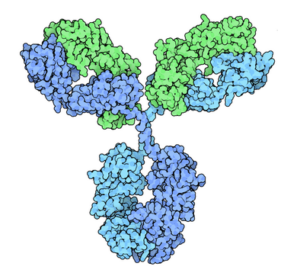- Tracking biopharma’s response to the new coronavirus (biopharmadive.com)
The new coronavirus moved around the world with lightning speed. Since December, when it was first identified in Wuhan, China, nearly every country has reported cases of infection...Dozens of drugmakers have started work on vaccines to protect against the virus or medicines to treat COVID-19, the illness it causes. Hundreds of studies are underway in search of an effective treatment, testing mostly repurposed HIV or influenza drugs. One, a U.S. government-led trial of an antiviral drug called remdesivir, showed some hopeful signs of hastening recovery in patients hospitalized with COVID-19...Yet it will likely be months, or even years, before a vaccine or treatment designed specifically for SARS-CoV-2 becomes available. Current treatment consists of supportive care...For the biopharma industry, the virus is disrupting business on a broad scale. Many companies source chemicals or pharmaceutical ingredients from factories across the globe, creating supply chain challenges, while stay-at-home orders have grounded company sales teams. The epidemic's impact on clinical trials has also widened, causing numerous delays to enrollment or postponements to studies of treatments for other diseases...READ MORE
- How the 8 biggest U.S. pharmas enriched their shareholders in 2019 (fiercepharma.com)
With tens of billions of dollars in sales pumping into their coffers each year, the world's largest publicly traded pharmaceutical companies can be extremely profitable investments for shareholders...But impressive profits––and the welcome return on investment that comes with them––don't always translate into more innovation or long-term value. Megapharmas spend a lot of money each year investing in short-term returns for their shareholders—including executives—instead of investing more of those profits into R&D...How can publicly traded companies best return value for investors?... A premium must be placed on new products and novel launches because if you don’t do that and you invest in buying back your stock instead of buying for your future, then you have satisfied the short term need for some shareholders but you have, in the long term, lost value...READ MORE
- Expanding The Tent: Improving Trial Participation Among Under-Represented Patient Populations (invivo.pharmaintelligence.informa.com)
The biopharma industry has struggled to recruit patients into clinical trials that adequately reflect the diverse patient populations they hope to reach with new products. Failure to improve minority subgroup participation now will cost trial sponsors later...New Research from the Tufts Center for the Study of Drug Development reveals the extent to which minority groups are absent from clinical trials supporting new drug and biologic approvals...Additional tools are emerging to help sponsors effectively recruit and enroll underrepresented patient populations in clinical trials...READ MORE
- IP Explained: By the Numbers: How reliable IP protections promote a strong U.S. economy (catalyst.phrma.org)
The U.S. biopharmaceutical industry depends on predictable and reliable intellectual property protections, including patents, to maintain its role as the global leader in biopharmaceutical innovation. While these strong IP protections promote innovation and pave the way for the research and development of new medicines for patients, they also have a tremendous impact on the U.S. economy...Here is a snapshot of the industry’s significant economic footprint in the United States, by the numbers:...READ MORE
- ‘Directing’ evolution to identify potential drugs earlier in discovery (sciencedaily.com)
Scientists have developed a technique that could significantly reduce the time of discovering potential new antibody-based drugs to treat disease...New research...has resulted in a technique that allows fragments of antibodies to be screened for susceptibility to aggregation caused by structure disruption much earlier in the drug discovery process...a significant problem has been the failure rate of candidates upon manufacturing at industrial scale. This often only emerges at a very late stage in the development process -- these drugs are failing at the last hurdle...READ MORE
How the target proteins are screened
Directed evolution





